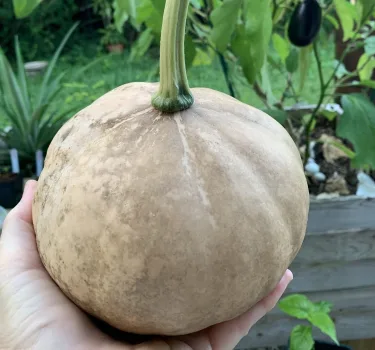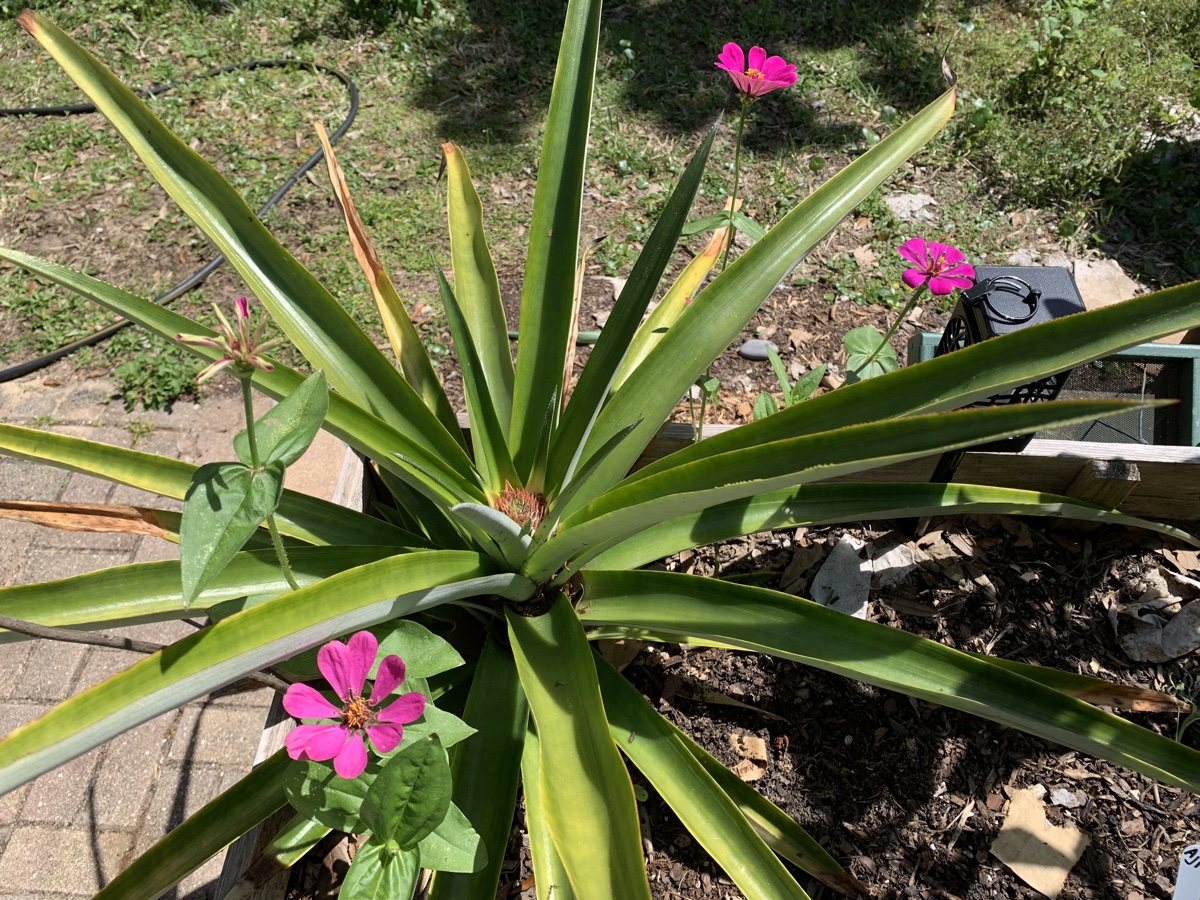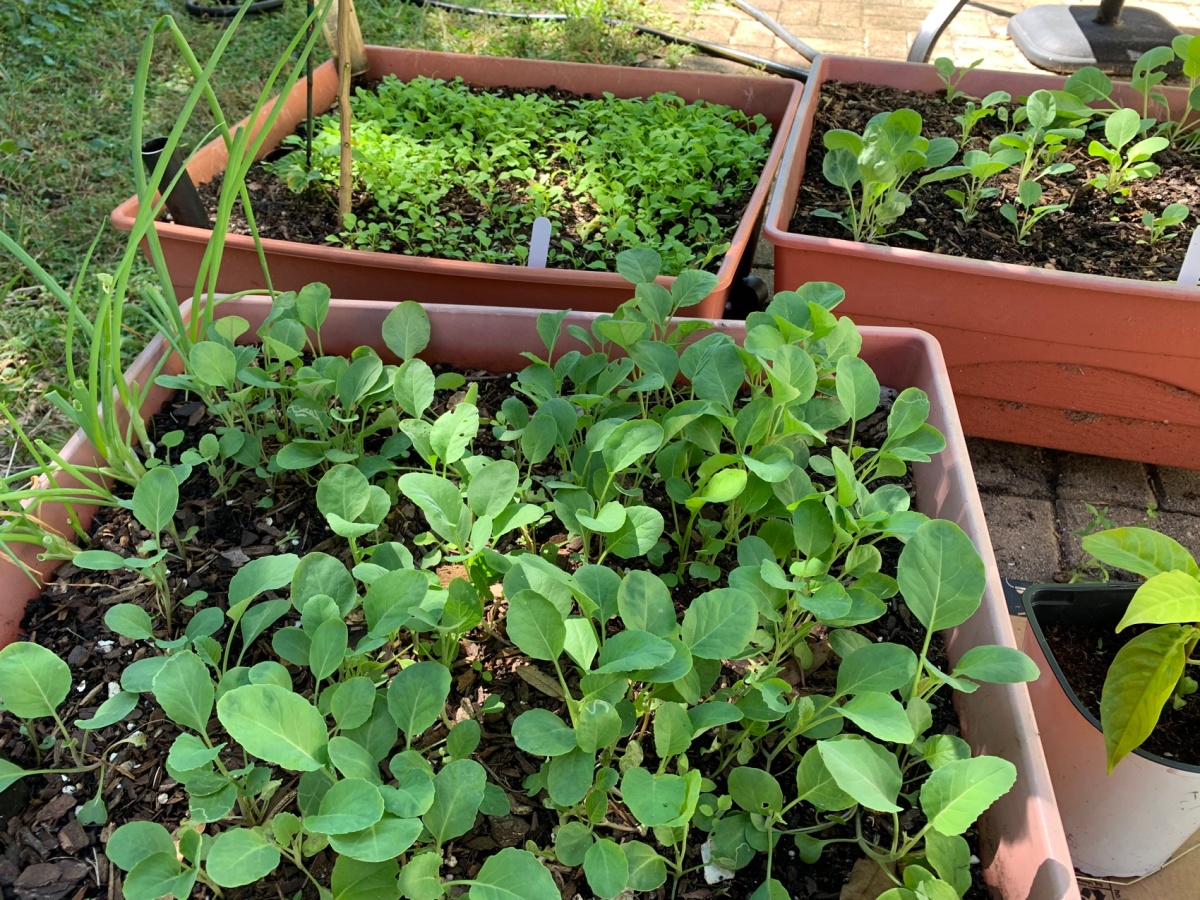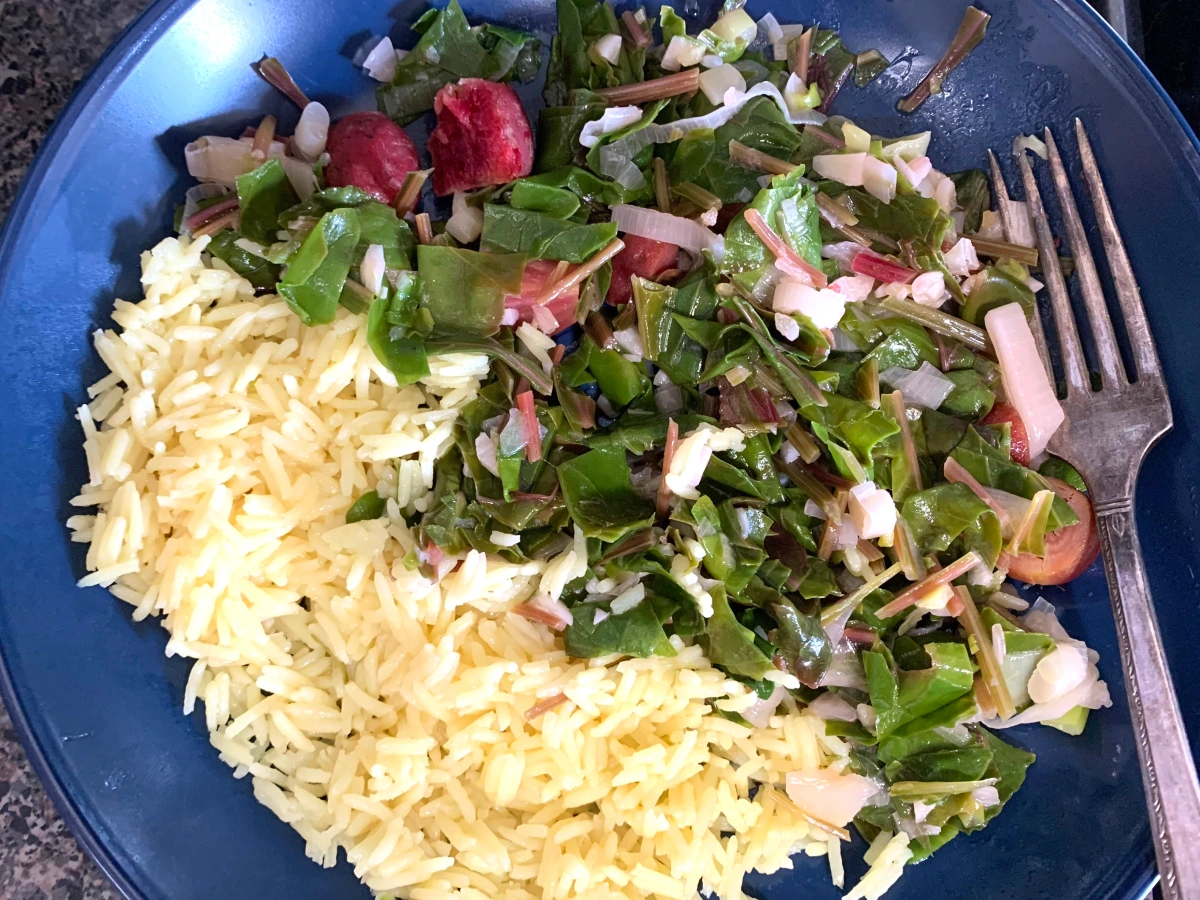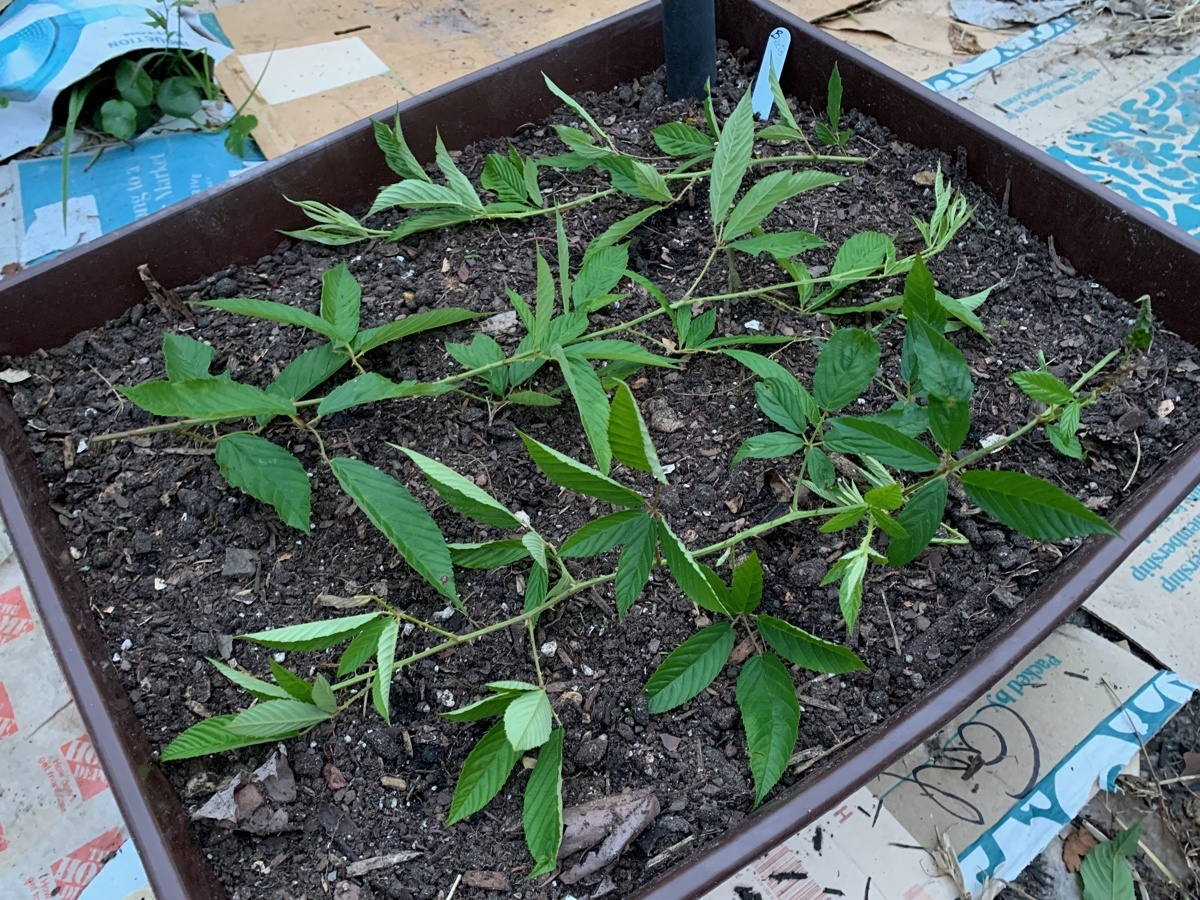Sweet potatoes grow really well where I live. They need no attention at all and just vine around the grass while the roots create little potatoes. At least in my case they are little. This is probably because they were crowded into a small box.

I began growing sweet potatoes this spring for the leaves. It is the one green thing that has done well during the heat. I would pick a few leaves and chop them to cook or add to soup and / or stew.
Then, one day I was making a pot roast and wishing I had a sweet potato to add. Oh wait… I am growing them. Sure enough, I dug down into the grow box and pulled up a little sweet potato! It was added to my stew.

In order to store sweet potatoes they should be “cured”. Basically it is done to let the skins toughen up for storage, and the potatoes sweeten.
I am leaving my dug potatoes outside to cure, because we have heat and humidity – see my first photo. After two weeks, I’ll brush them off and bring them inside. Here’s a video by Elise of The Urban Harvest to explain harvesting sweet potatoes. (I’m jealous of her big garden spaces.)

Freeing Up the Box For Planting
Another reason I dug the sweet potatoes is that I can really use another grow box for planting this Fall.
I also invested in two new grow bags with handles. You can see them on this page which I wrote about using grow bags for gardening. I like small, manageable pots that can be moved around if needed.
That box in my photo above has wheels on the bottom and I just drag it around to find the sun. The grow bag pictured is only half full of dirt, which makes it easy to move too. Once I plant, I will fill it where it stands.
By the way, as soon as I had these new places ready to plant, the raccoons dug all through them overnight! (They dug up a potato I missed!) Maybe the trick is to put something new out, let them be nosey, and wait until they are no longer interested, before planting.
